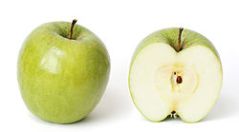
I remember my undergraduate philosophy teacher explaining the definition of essence. He (hypothetically) put a green Granny Smith and a more reddish McIntosh Apple on the table and he asked the students are these both apples? The class said yes even though they had different colors, shapes, sizes, and tastes. The teacher explained that an essence is what makes a thing what it is. This idea also applies to digital history. Digital History is History! Even though for hundreds of years historians have been focused on the book length monogram that does not mean that that is the only form that history can take. I especially liked the teaching and learning class because it talked about the skills historians use like analyzing sources, looking at multiply perspectives, and the bigger picture. These skills can be utilized whether writing a book or creating a website. This means when we used text mining tools to discover anomalies in primary sources, or used maps or other spatial history tools to explore historical topics in a new way we were not just doing digital history we were doing history.
Clio I also taught me new ways to gather sources, analyzing information, and disseminating my findings. We spent one week learning about the benefits and weaknesses of using crowdsourcing to gather information or metadata. We learned about publishing historical articles or books online where they can receive a lot more peer review and a lot less cost. In addition, we wrote and responded to blogs based on each week’s assignments. This was a good way to reflect on what you had learned each week and get a sense of what other students were thinking, which I think benefited our class discussion. Even though these tools are new they should still be judged by the same standards as a book and not all of this new technology is the same. For example, we found text mining and visualizations can help historians analyze their work in a new way. However, it is more of a stretch to call gaming “history,” since most of the games we looked at did not enhance the historical thinking skills I mentioned earlier.
I liked the practicums but I also found them the most challenging. In my other graduate classes I am doing new things, like book reviews and term papers, but I am using skills I learned from my past school experience to accomplish them. These practicums involve some historical skills but also involve some technical skills that I have never used before. So they usually took a lot longer than I would have anticipated. However, as others have pointed out, they also taught me to be experimental and try new things.
Looking at history in a new way has showed me a truer sense of the essence of history. This class has taught me new tools to gather, sources, analyze information, and disseminate my research. It has also helped me improve my skill at trying new things and asking new questions. These are all valuable lessons that I can apply not just to my future with digital history but my whole academic future and beyond.



